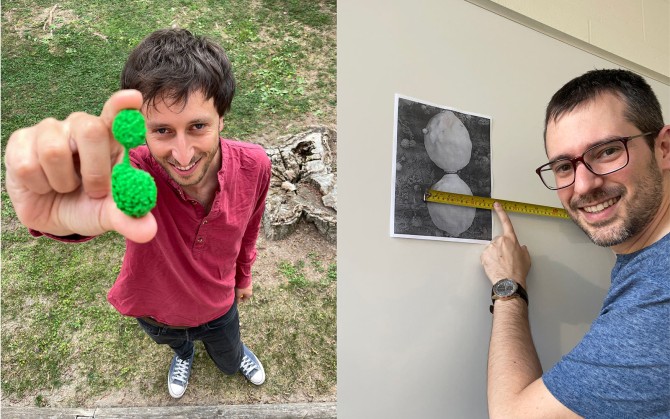News directly from Cornell's colleges and centers
Project aims to unveil secrets about cell size diversity
By Eric Laine
A new research project aims to unravel the physical limits of cell size in budding yeast, with the ultimate goal of learning more about how cells, the fundamental units of life, modulate size control during evolution.
The project, “Experimentally evolving budding yeast cell size to test scaling laws in cell biology,” is led by Andrea Giometto, assistant professor at the School of Civil and Environmental Engineering at Cornell, and Marco Fumasoni, principal investigator at Instituto Gulbenkian Ciência, Portugal, who were awarded a $900,000 Early Career Research Grant from the International Human Frontier Science Program Organization.
Cells exhibit a remarkable diversity of sizes and shapes among different species, a diversity produced throughout billions of years. The sizes of many internal components of the cell, such as the nucleus, genome and various organelles, tend to scale proportionally with cell size. For example, larger cells tend to have larger nuclei. The mechanisms underlying these scaling properties and how cells modulate their size control while preserving scaling across species during evolution are currently unknown.
Giometto and Fumasoni plan to research these mechanisms by vastly extending the range of sizes typically covered by cells of the most genetically tractable eukaryote, the budding yeast, by evolving and engineering them under controlled laboratory conditions. The interdisciplinary team will combine experiments, models and theory to unravel how cells can evolve or be engineered to different cell sizes, and how intracellular features will scale in response.
“This is an incredible opportunity for our two teams to exchange ideas and get out of our disciplinary comfort zones,” Giometto said. “As often happens in evolutionary experiments, we hope to be surprised by unexpected physiological and physical changes that cells may undergo in response to selection and engineering.”
To Fumasoni, the grant “represents a fantastic opportunity to work on a frontier scientific question, with an intercontinental and interdisciplinary team.” Fumasoni said developing this research will “provide the conditions and resources to combine our expertise at best,” and “the collaboration will strengthen the connections between the two institutions and help building bridges across our reciprocal disciplines.”
The project was one of only 34 selected among 589 submissions to the 2023 round of grants from the International Human Frontier Science Program Organization.
This article was adapted from an original version with permission from the Instituto Gulbenkian Ciência.
Media Contact
Get Cornell news delivered right to your inbox.
Subscribe

